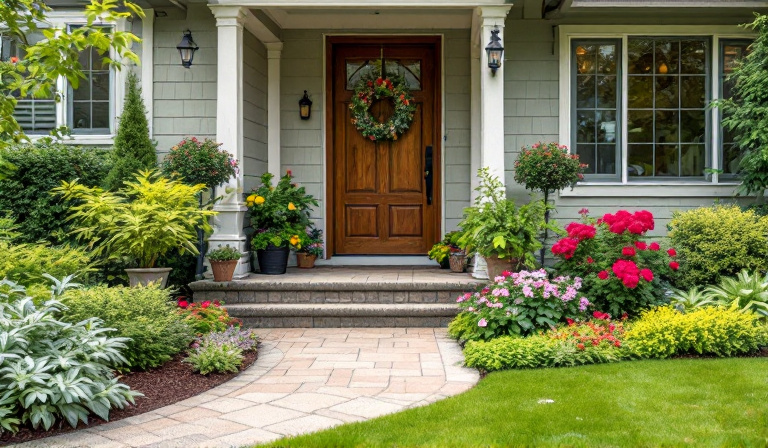
Enhancing your home's curb appeal through landscaping is a rewarding endeavor that not only elevates the aesthetic value of your property but also potentially increases its market value. Whether you're a seasoned gardener or a complete novice, there are simple, effective strategies you can employ to transform your front yard into a welcoming and visually stunning space.
Before you dive into planting, take some time to plan your landscape design. Consider the architecture of your home, the size of your yard, and the climate of your region. Sketch a rough layout, identifying areas for grass, flower beds, shrubs, and trees. Planning helps you maintain a cohesive look and ensures that each element complements your home rather than competing with it.
Your front door is the focal point of your home's exterior, so make it stand out. A fresh coat of paint in a vibrant color can make a significant impact. Consider hues that contrast with your exterior walls to create an inviting entryway. Flanking the door with potted plants or symmetrical flower beds can also enhance its prominence and appeal.
Choosing native plants for your landscaping offers numerous benefits. Native species are adapted to local climate conditions, requiring less water and maintenance. They also support local wildlife, including beneficial insects and pollinators. Research the native flora in your area and select a mix of perennials, shrubs, and trees to create a dynamic, sustainable landscape.
Defined edges around lawns and flower beds give your yard a polished look. Use materials like brick, stone, or metal edging to separate different areas. This not only enhances the visual appeal but also helps contain mulch, prevent weed growth, and make lawn mowing easier.
Outdoor lighting is a powerful tool for boosting curb appeal while also increasing safety. Install pathway lights to illuminate walkways, and consider uplights for highlighting architectural features or trees. Solar-powered options are eco-friendly and easy to install, providing a warm glow without the need for electrical wiring.
A lush, green lawn is a staple of curb appeal. Regular mowing, watering, and fertilizing are essential to keep your grass healthy. Consider transitioning to drought-resistant grass varieties if water conservation is a priority in your area. Additionally, aerating the lawn annually and addressing bare patches promptly will keep your yard looking its best.
Hardscaping elements like walkways, patios, and retaining walls can add both functionality and beauty to your landscape. Use natural materials such as stone or brick to complement the organic elements of your yard. Hardscaping can also help manage water runoff and create defined spaces for outdoor activities.
Incorporating plants that bloom at different times of the year ensures your landscape remains vibrant throughout the seasons. Mix spring bulbs with summer perennials and fall foliage plants to maintain constant color. Adding evergreens will provide structure and greenery even in winter months.
Mulching is a simple yet effective way to improve the health and appearance of your garden. It helps retain soil moisture, suppress weeds, and adds a finished look to flower beds. Organic mulches like shredded bark or wood chips also decompose over time, enriching the soil.
Small details can make a big difference in your landscape's overall appeal. Keep pathways clear of debris, prune overgrown bushes, and remove any dead or diseased plants. Adding decorative elements like birdbaths, garden sculptures, or a charming bench can also enhance the space's character and charm.
With these tips in mind, you can create a landscape that not only enhances your home's curb appeal but also provides a welcoming environment for family and friends. A well-planned and maintained landscape reflects pride in ownership and sets a positive tone for anyone approaching your home.